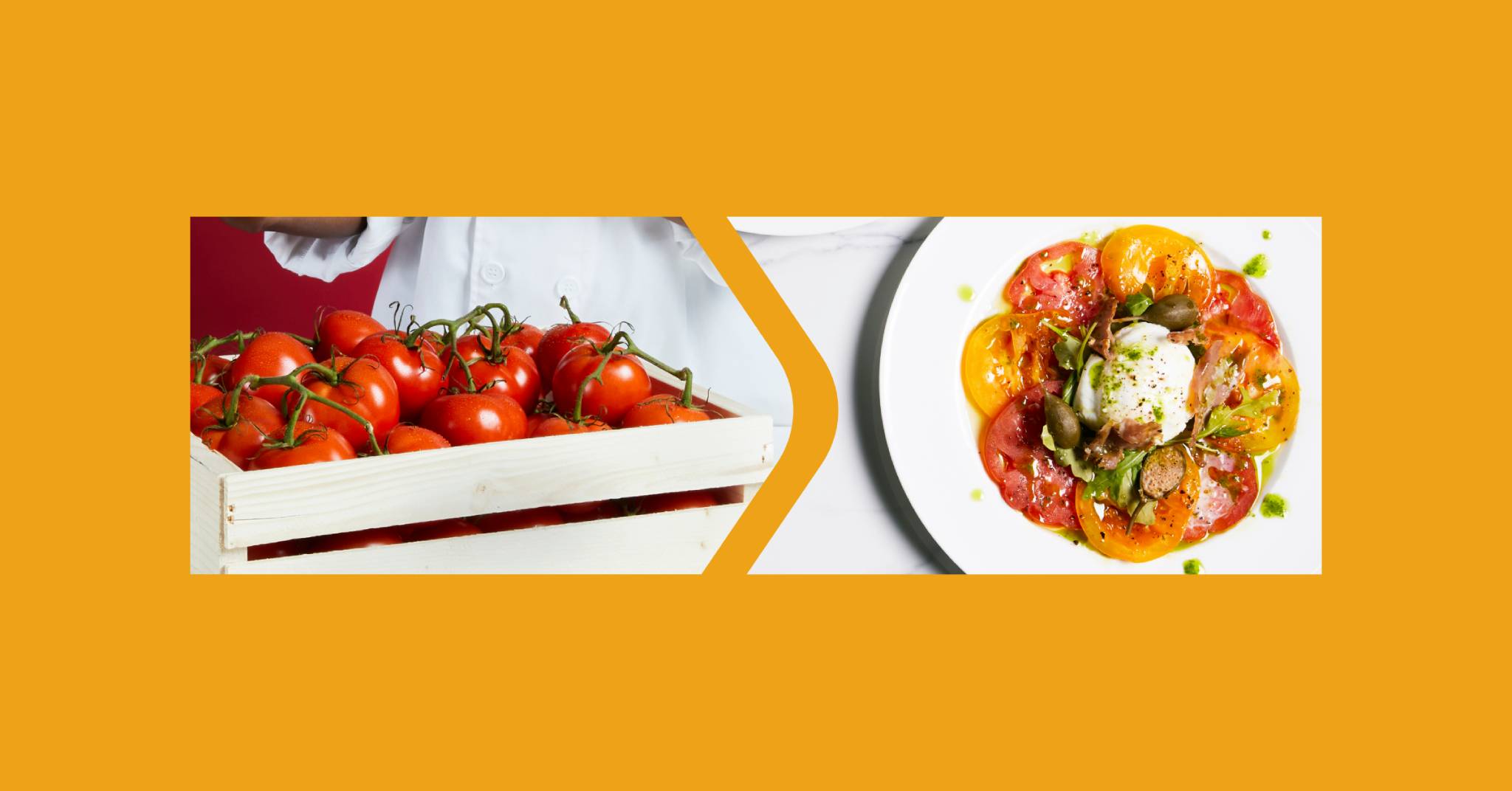
For years a battle has been raging in the offices of many hospitality businesses, and there are two sides with much the same goals, but vastly differing methods to achieve them.
I’m talking, of course, about profit margins vs profit markups.
You see, both are crucial to pricing your menu correctly, but both produce completely different metrics with which to measure things by.
In this article, it is my aim to help you understand not only the difference between the two, but the benefits and pitfalls of them too, covering these key areas:
- What is the key difference between a profit margin and markup?
- What is a profit margin?
- Examples of profit margin
- How to calculate profit margin
- What is a profit markup?
- Examples of profit markup
- How to calculate profit markup
- Setting your prices with profit margins
- Setting your prices by profit markup
- Pricing your menu: margin or markup?
Need more help understanding your COGS & margins?
How To Keep COGS Low & Margins High is a free eGuide that can help you make your BOH as profitable as can be!
What is the key difference between a profit margin and markup?
This is a question that I’m afraid will keep getting asked, no matter how many times it’s explained, or how many times you’ve actually worked either of these metrics out.
Even now I had to go back and double check to make sure I’d gotten my own information right. That’s how intertwined these two things are.
So, what are they?
Simply put, a profit margin is the amount you get to keep as a profit from a sale, whereas a markup is the difference between what you paid for something, versus what the customer has paid.
See? Super clear, right? Yeah, you’re right, we’ll have to dig a little deeper.
What is a profit margin?
Like I said, a profit margin is the amount you get to keep as a profit from a sale. It’s expressed as a percentage, but crucially, this can never go above 100% because it would be impossible to keep more than 100% of the profits from a sale. That would be financial alchemy.
Examples of profit margin
Think of it like a pie.
This pie is the $10 that a customer has just paid for one of your menu items, and for consistency’s sake, let’s say the menu item that they bought was also a pie. Now, this pie only costs you $3 to produce, meaning that for every $10 pie you sell, you get to keep $7 of that.
That $7 is your profit, and to express that as a percentage, you need to do a little maths.
How to calculate profit margin?
First, you need to deduct your costs from your sale price. In this case, we’ve already done that when we took that $3 away from the $10, leaving us with $7.
Next, you’ll divide that $7 profit by the $10 sale price, so 7÷10, which equals 0.70.
And finally, to get your final profit margin percentage, you multiply that number by 100, which gives you 70. So, your profit margin for this $10 pie would be 70%.
What is a profit markup?
Profit markups are a little trickier to calculate, and therefore a little trickier to wrap your head around (at least, they are for me). Plus, when you describe them they sound eerily similar to margins, and it takes a bit of focus to understand the differences. So, with that said, a profit markup is how much more you sold a menu item against how much you paid for the raw ingredients.
So, with that said, a profit markup is how much more you sold a menu item against how much you paid for the raw ingredients.
A key difference here is that this percentage can (and very often does) exceed 100%, and I’ll explain how.
Examples of profit markup
Let’s head back to our convenient $10 pie, shall we.
We’ve already established that our pie costs us $3 to produce, but sells at $10, which is a profit of $7. The way we can visualise the differences between profit margin, and profit markup is to consider how many times 3 goes into 7.
Already you can see that your markup is going to be over 100%, and you can also (hopefully) begin to see the stark difference between margin and markup.
How to calculate profit markup
But how do we calculate it? Again, we need to do some simple maths.
First thing we need to do is work out our profit again (or, just scroll up and look at the last section if you’re lazy, like me), so that’s $10 minus $3, which gives us a profit of $7.
Then you divide your profit of $7 by your cost of $3, so 7÷3 which gives us 2.33.
And finally, you multiply that by 100 to get your profit markup of 233%.
Should you use margins or markups?
This is the age-old question really, and it’s one that doesn’t have a concrete answer, and that’s because there are benefits to both metrics when you’re pricing your menu.
Setting your prices with profit margins
When you set the prices on your menu to achieve a certain profit margin, this allows you to more accurately predict your overall profits because you’ll know exactly how much profit you’ll be making from each menu item sold.
There are drawbacks to this though, especially with menu items that are a lot cheaper to produce, such as coffee.
For example, if you want to sell your menu items with the goal of achieving a profit margin of 70%, this will still see some healthy returns for prices like your $10 pie, bagging you a guaranteed $7 profit from each one sold.
But if we applied the same 70% profit margin to a regular coffee, because it would only cost you around 25c to produce, a 70% profit margin would dictate a price per coffee of only 84c. If you need me to tell you that this is too low a price to be selling coffee for, you’re in more trouble than you imagined. Even 7/11 sells their coffees for $1 and we’re all better than that. So, we should set our prices by profit markups then, right?
So, we should set our prices by profit markups then, right?
Not quite.
Setting your prices by profit markup
You see, setting your prices by profit markup kind of swings everything in the other direction a bit.
Let’s head back to the price of a coffee to illustrate this.
If you price a cup of coffee at a reasonable $4, this yields you a profit markup of 1500%. This is astronomical, but it has more to say about the coffee industry than it does about menu costing best practices.
Applying the same profit markup to our $10 pie shows us why setting your prices to a uniform profit markup across all products isn’t a great idea in hospitality.
This is because the pie would not be on sale for $10 anymore. Not even close.
It would be priced at $48.
Now, if you are reading this, and your name is Neil Perry, or Wolfgang Puck, please, go ahead and charge almost fifty bucks for a pie. Enjoy your profits and open another few restaurants with your pie-based proceeds.
Odds are, you’re neither of these chefs and so it should go without saying that charging $48 for a pie would not be wise and is likely to cause some dissent amongst your customer base.
Pricing your menu: margin or markup?
In a lot of industries, this is an easy question to answer (it’s markup, btw). This is because most of their inventory have similar enough costs that you wouldn’t see the swing in prices you get when pricing a menu by markup alone.
But pricing your menu by margin alone isn’t really the way either, and for the same reasons.
Instead, it would be a good exercise to work out both the profit margin and the profit markup for each of your menu items, and choose whichever yields the most realistic and satisfying outcome for both your customers and your business.

News you care about. Tips you can use.
Everything your business needs to grow, delivered straight to your inbox.


